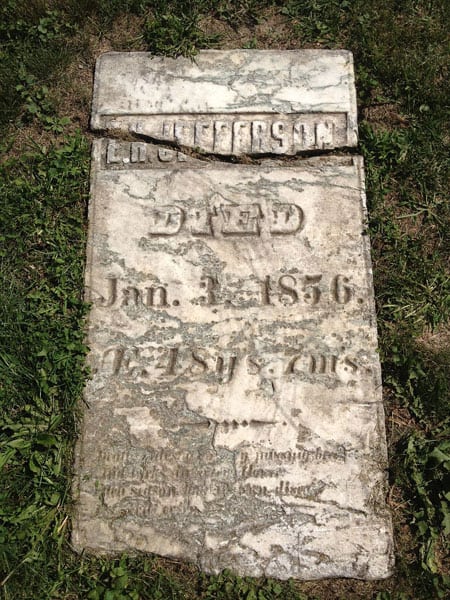
June 14, 2018; Smithsonian Magazine
As Andrew Davenport writes for Smithsonian Magazine, Getting Word—a project of the nonprofit Thomas Jefferson Foundation since 1993—has “fundamentally altered” the interpretation of Black life under Thomas Jefferson.
Monticello, the famed plantation owned by Jefferson, was home to hundreds of slaves. Over the past 25 years, the Getting Word project has carried out over 100 oral interviews, in addition to archival research. One result of the research is that the Thomas Jefferson Foundation, which owns and operates Monticello, has released a public statement acknowledging that Thomas Jefferson had a longtime relationship with one of his slaves, Sally Hemings. It is also in the process of revising its exhibits in accord with that statement.
According to the Thomas Jefferson Foundation, while “the issue of Jefferson’s paternity has been the subject of controversy for at least two centuries…It is now the Thomas Jefferson Foundation’s view that the issue is a settled historical matter.” The statement, as well as the foundation’s commitment to “eliminate qualifying language” from exhibits and publications, reflects, Davenport writes, “the research of the Getting Word project, as well as the best-selling scholar Annette Gordon-Reed, a close associate of the project’s founders.”
Of course, this shift is part of a broader trend. As NPQ noted last month, citing an article in Slate, the changes at Monticello reflect a broader cultural shift toward what Eileen Cunniffe called bearing “unflinching witness to some (though certainly not all) of the most disturbing realities of American history—slavery, lynchings, segregation, and many other deep injustices.” In addition to the opening of the Legacy Museum about the history of lynchings in Birmingham, Alabama and the opening of the African American History Museum at the Smithsonian on the mall in Washington, DC, other prominent examples of new Black history sites include:
- A walking tour of Charleston, South Carolina, that acknowledges the city’s role as “the primary US port of entry for enslaved Africans” and stops outside the Old Slave Mart museum, which opened in 2007.
- The Whitney Plantation in Louisiana, which opened in 2014 and focuses on the slaves who lived there, not the plantation owners.
- Manumission Tour Company in Alexandria, Virginia, which since 2016 has been offering walking tours that explore the history of urban slavery.
- President’s House Site in Philadelphia, adjacent to the Liberty Bell Pavilion in Independence National Historical Park, which opened in 2010 and is “a partial reconstruction of George Washington’s presidential mansion that fully centers the stories of the black people he enslaved.”
As for Monticello, Davenport notes that even Americans who have learned about Sally Hemings and her relationship with the nation’s third president know few details about the lives of the hundreds of individuals enslaved by Jefferson. Collecting descendants’ oral histories helps fill these gaps in the historical record. Davenport adds that while Monticello has been historically presented to tourists as the space of a white man, Thomas Jefferson, Blacks “were by far in the majority at Monticello. Monticello was a Black space. People of African descent shaped the entire landscape: how the food tasted, what the place sounded and felt like.”
Sign up for our free newsletters
Subscribe to NPQ's newsletters to have our top stories delivered directly to your inbox.
By signing up, you agree to our privacy policy and terms of use, and to receive messages from NPQ and our partners.
It took 25 years, but now, a quarter-century after the Giving Word project launched, its research findings are being fully integrated into the stories tourists will see when they visit Monticello.
Until the 1990s, the story of Hemings wasn’t even told at Monticello. Then, as Michel Martin and Emma Bowman of National Public Radio explain, “Monticello held two separate tours—one of the house and one of Mulberry Row, where the enslaved people lived and worked. In other words, visitors could decide whether to experience this darker side of history.”
Starting this past Saturday, however, the Hemings exhibit is now part of the main house tour. “It’s not a recreation of what her room would’ve looked like at the time, but rather, a presentation of Sally Hemings as a fully-dimensioned human being: a mother, a sister, a daughter, a world traveler,” says Gayle Jessup White, who helped launch the new exhibits. White herself is a descendant of Sally Hemings’ brother and, through another ancestor, of Thomas Jefferson.
As Martin and Bowman write, “by introducing new exhibits that are interwoven into one tour, Monticello acknowledges the dynamic experience helps complete its history.”
“Going forward, guests will have a tour that is all-inclusive, that tells the story not only of Thomas Jefferson and his family but of the enslaved families as well,” White says. “It’s not just about Thomas Jefferson, it’s about the people who made Thomas Jefferson’s life possible. And that would’ve been the enslaved people who kept this plantation running.”
Many Americans don’t want to confront our country’s ugliest period, White adds. “But at Monticello we’re giving humanity to people long forgotten. And the people to whom we’re giving humanity are my people—they’re my family.”—Steve Dubb













